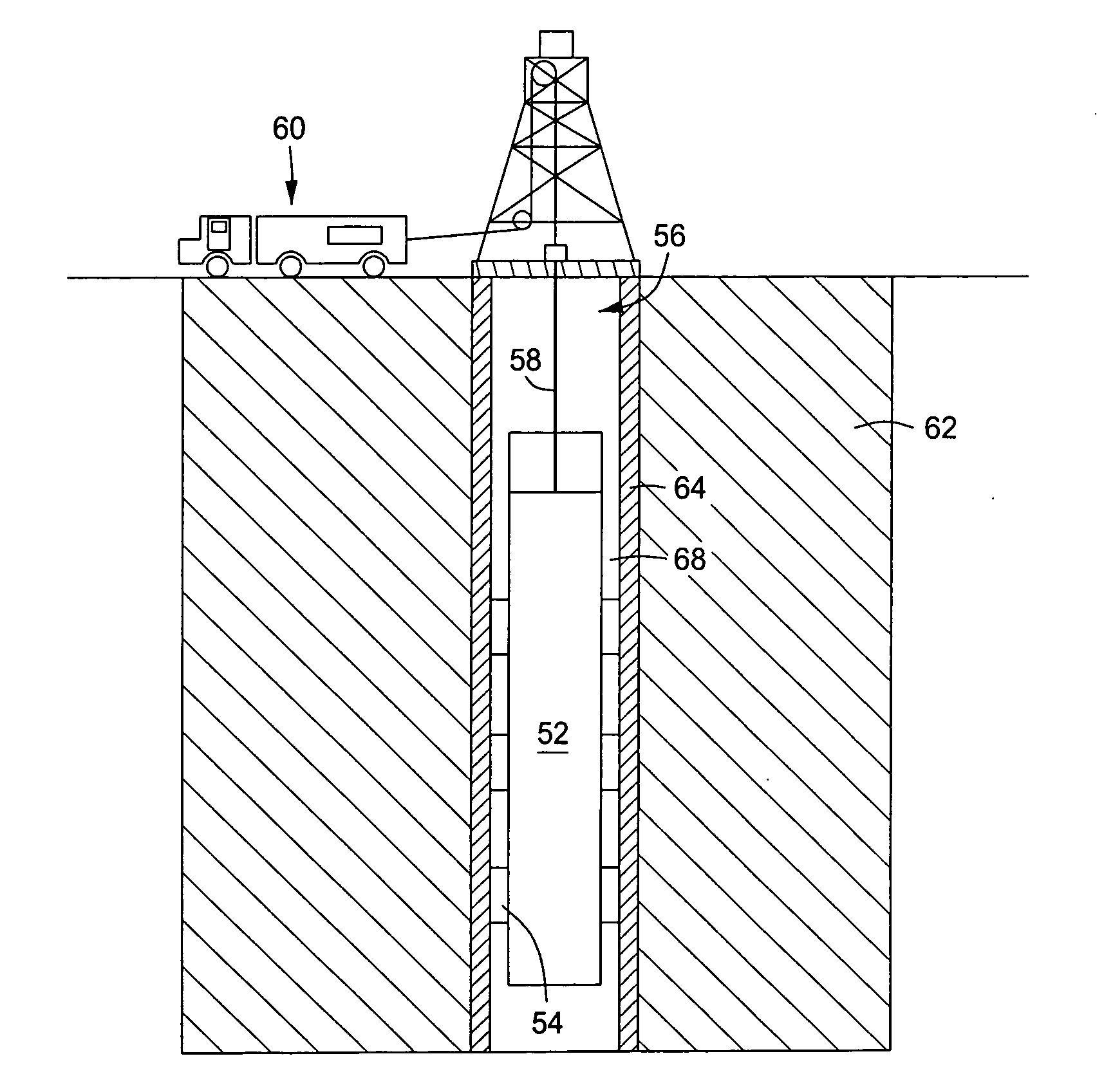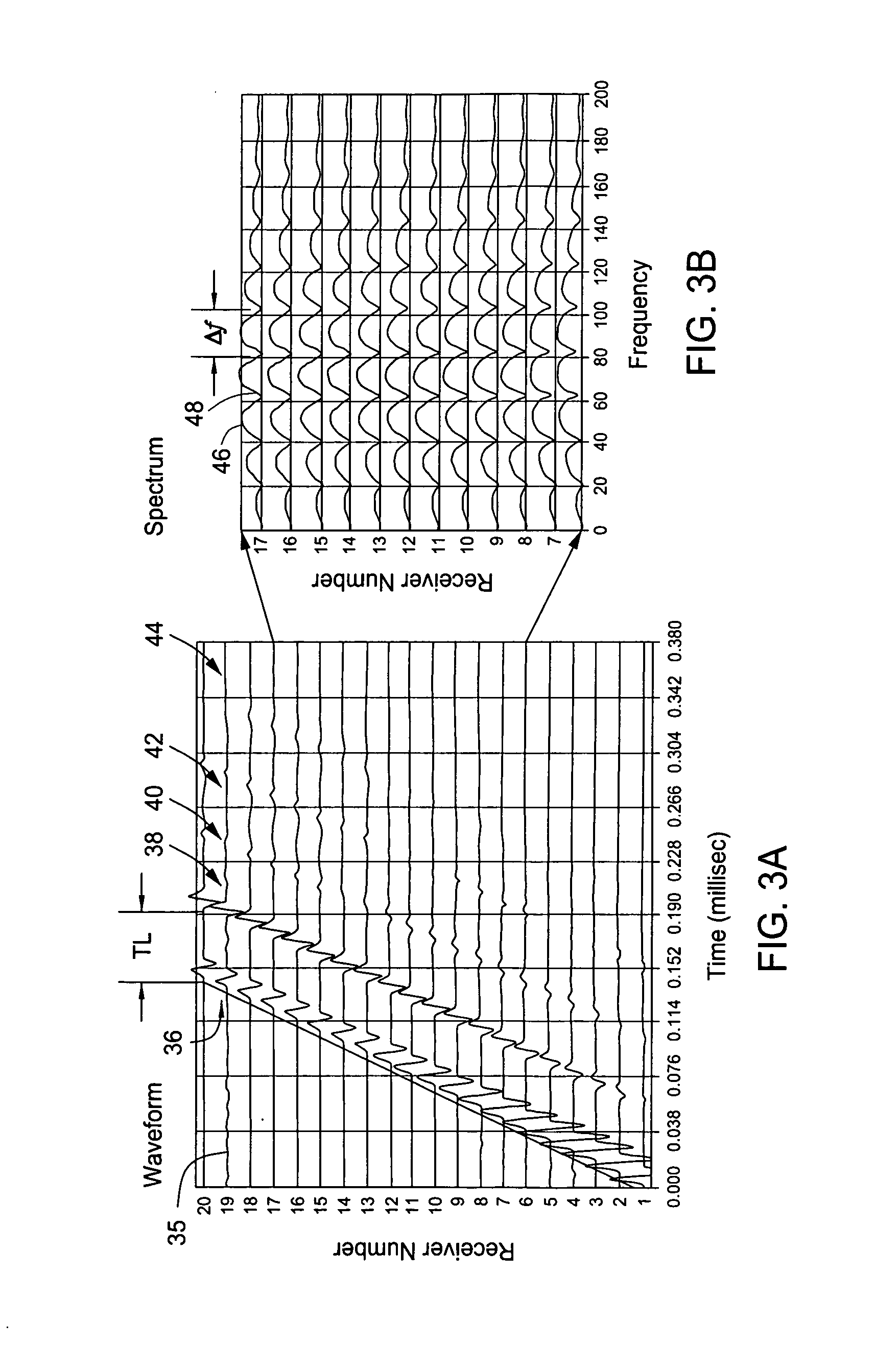Cement bond analysis
a cement bond and analysis method technology, applied in the field of cement bond analysis, can solve the problems of difficult assessment of cement and formation rock bond quality, poor cementing job performance, and inability to cover the casing
- Summary
- Abstract
- Description
- Claims
- Application Information
AI Technical Summary
Benefits of technology
Problems solved by technology
Method used
Image
Examples
Embodiment Construction
[0018]In an embodiment of the method and device herein described, acoustic waves are induced into a bonding material and the resulting signal within is measured and analyzed. With regard now to FIG. 1, an example of an acoustic signal 20 is shown propagating through a cross sectional portion of a cased downhole wellbore 8. The cased wellbore 8 of FIG. 1 includes a section of casing 10, a layer of cement 12, and a downhole formation 14, where the cement 12 adheres the casing 10 to the formation 14. A source 16 for generating the acoustic signal 20 is provided at a first location and a receiver 18 for receiving the acoustic signal 20 is disposed at a second location. As shown in FIG. 1, the distance between the source 16 and the receiver 18 is denoted by the reference identifier “x”. As elaborated below, the signal source 16 and the signal receiver 18 can be included with a downhole tool 28 used for casing bond evaluation. The source 16 for generating the acoustic signal 20 may compri...
PUM
 Login to View More
Login to View More Abstract
Description
Claims
Application Information
 Login to View More
Login to View More - R&D
- Intellectual Property
- Life Sciences
- Materials
- Tech Scout
- Unparalleled Data Quality
- Higher Quality Content
- 60% Fewer Hallucinations
Browse by: Latest US Patents, China's latest patents, Technical Efficacy Thesaurus, Application Domain, Technology Topic, Popular Technical Reports.
© 2025 PatSnap. All rights reserved.Legal|Privacy policy|Modern Slavery Act Transparency Statement|Sitemap|About US| Contact US: help@patsnap.com



